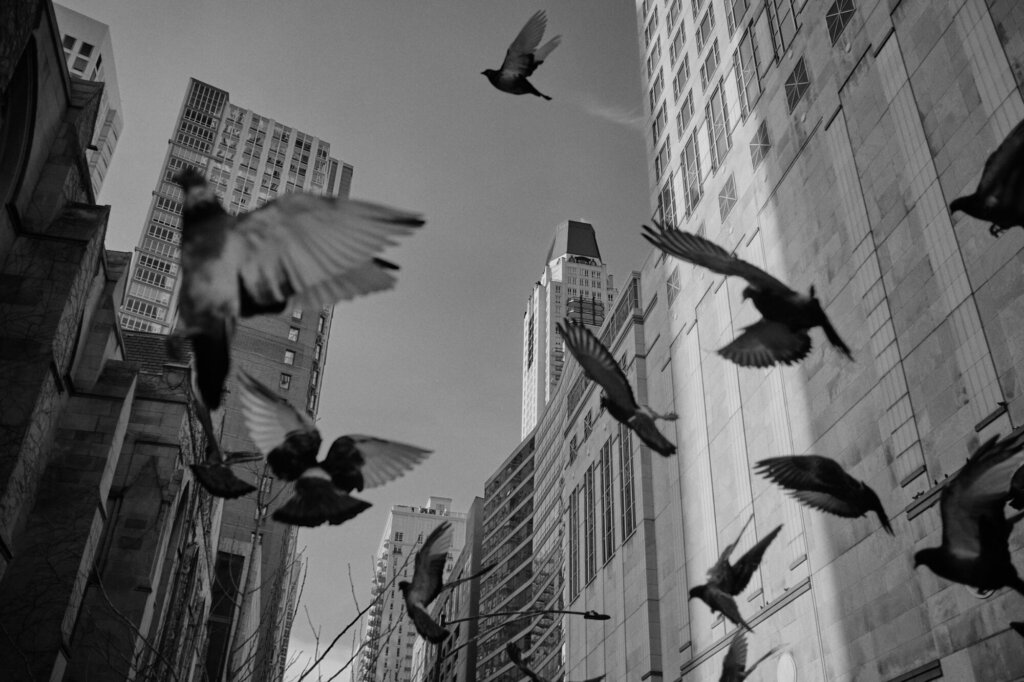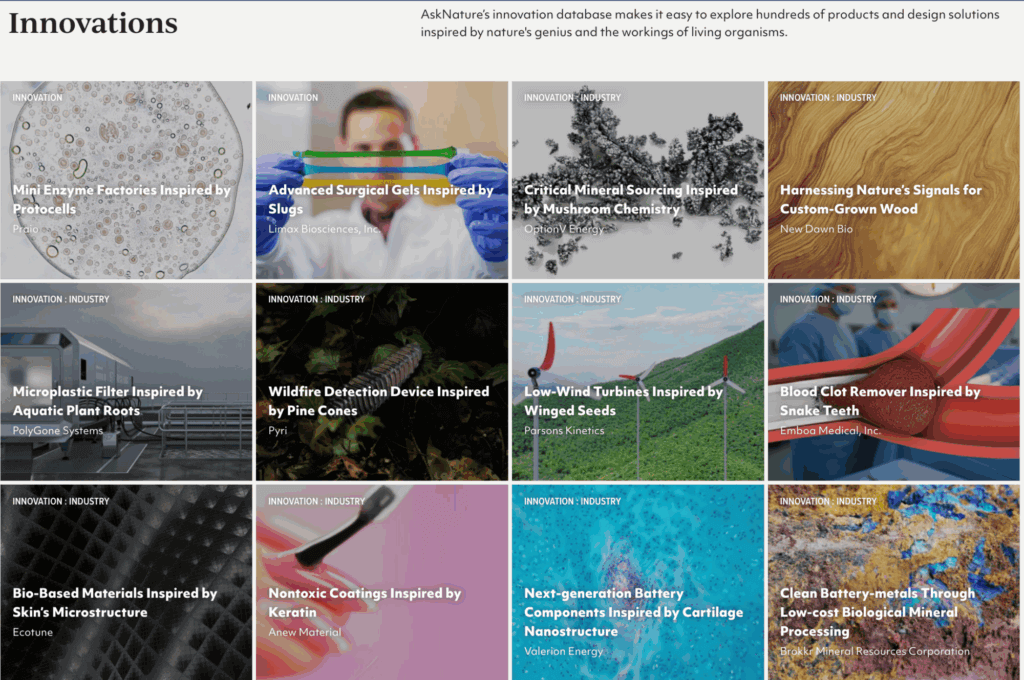
Look out of your window, and you’re likely to see buildings, concrete, and human-made materials. In most places where we live, you’ll see an environment defined by human needs: reflective structures, rigid, manufactured materials, and a constant, low-frequency roar of human-made noise. It seems impossible that any complex life could thrive here. Yet each spring, the birds are singing.
As an academic biologist who’s studied urban ecology, my work centered on a fundamental question: How do animals like the American robin or the Northern cardinal truly make a home in our hyper-engineered landscapes, and what do they need to survive and thrive? The answer, found in their behavior and acoustics, is an exciting “when in Rome” lesson in adaptability. A lesson that feeds directly into the powerful concept of biomimicry.

Building a Life among the Noise
My research in D.C., Maryland and Virginia on urban songbirds, showed that two primary, non-negotiable obstacles impact birds in the city: constant noise and constructed clutter. Cities aren’t just loud; they’re designed with hard materials that scatter sound.
We found that to pierce the low-frequency drone of traffic, species like the Gray catbird often sing at a significantly higher minimum frequency. They are adapting their melody to be heard—like turning up the treble to be heard over a bass rumble. Simultaneously, the abundance of reflective buildings—a sound wave scatterer—forced some species to reduce the range and complexity of their songs. Many sang at lower pitches, likely because the hard surfaces of glass and concrete reflect high-pitches notes, turning a crisp signal into distorted noise.
For a bird, this is the difference between clearly signaling “I’m here, this is my territory” or “I’m here and I’m looking for love” and an unintelligible whisper. These findings show that our architecture doesn’t just impact visible habitat; it alters the very physics of communication, often imposing a trade-off that compromises the quality of a vital signal needed for animals to thrive and raise families.

Nature’s Blueprints for Home & the Biophilic Imperative
If city builders are inadvertently creating acoustically hostile environments, what can we learn from birds, a class of animals that has inspired human architecture for millenia? This is where biomimicry—innovation inspired by nature—offers a powerful prescription. Camilo Garzón’s AskNature collection on natural homes reveals blueprints where function and efficiency are put first: nature doesn’t waste, overbuild, or overcomplicate.
We can look to nature’s master builders, whose strategies perfectly embody the core principles outlined in talks like Sean Quinn’s AskNature Hive Talk: How to Design a Biophilic Building. This approach moves beyond simple greenwashing, urging us to integrate elements like visual connections with nature and thermal/airflow variability.
Consider biomimicry’s poster child, the humble termite. Their massive mounds are not just piles of dirt; they are self-regulating systems. Through intricate tunnels and material choices (thermal mass), the mounds maintain stable temperatures and humidity without active cooling or heating, a design lesson we can apply to passive ventilation in skyscrapers. Similarly, pinecone scales inspire facades that expand and contract passively with temperature and moisture, allowing buildings to breathe and regulate their internal climate with zero external energy input.
Nature’s goal is elegant simplicity: solve complex problems with minimal energy expenditure and local materials, ensuring the “home” works perfectly for the inhabitant, and also, within its ecosystem. This goal- creating buildings that perform ecologically while nurturing human connection – is the lifeblood of biophilic design.

The Regenerative Vision of Amanda Sturgeon, FAIA
The global shift toward truly regenerative architecture is led by a few extraordinary visionaries, and none have shaped this movement more profoundly than the award-winning architect and thought-leader, Amanda Sturgeon. Currently serving as the CEO of The Biomimicry Institute, Amanda’s career has been an unwavering dedication to dissolving the artificial barriers between the built and natural environments.
Amanda, a Fellow of the American Institute of Architects, is the definitive global expert on biophilic design, which she champions not merely as an aesthetic choice but as a powerful, non-negotiable principle for health and resilience. As she succinctly puts it, in my favorite quote from her, our modern buildings are often “barren tombs, where people’s souls and creativity go to die.” Her personal experience working in a windowless office fueled her determination to revolutionize how we design spaces, proving that access to natural light, fresh air, and sensory connections to the outdoors are critical for human health, wellbeing, and productivity.
Before taking the helm at The Biomimicry Institute, Amanda was the long-time CEO of the International Living Future Institute (ILFI), where she was the driving force behind regenerative frameworks like the Living Building Challenge and founded the Biophilic Design Initiative. Her leadership scaled the organization globally and solidified her legacy as an architect who sees humans and nature as one living system. Her influential book, Creating Biophilic Buildings, serves as the essential guidebook for architects worldwide, transforming the practice from theoretical concept into tangible, site-specific reality. Her work, including her essay in the anthology All We Can Save, provides essential solutions for climate change by demanding a holistic, place-based design approach that gives reverence to both the ecology and the history of a location. She is tirelessly dedicated to ensuring that regenerative design is scaled into large-scale, mainstream projects, cementing her status as one of the most powerful women in sustainability.

Designing for the Wild Tenant
So, what does a biologist’s study of struggling songbirds, a termite’s thermal efficiency, and Amanda Sturgeon’s regenerative philosophy have to do with the next city block? Everything. We need a paradigm shift. Instead of designing for us and hoping nature adapts, we must design with nature as a co-tenant. This means shifting our goal from merely mitigating environmental damage to actively regenerating the environment through design.
This Sturgeon-led approach translates into three concrete actions:
- Thinking Acoustically: Incorporate sound-absorbing materials like living green walls and textured, porous facades to cut down on reverberation, creating a quieter, clearer acoustic environment for all (I’ll bet the catbirds I studied would also be huge proponents).
- Prioritizing Native Habitats: Go beyond manicured grass by mandating dense, native plantings and green roofs, providing not just cover, but the specific natural materials and understory density that wild species need for true shelter and successful breeding, making our buildings part of the local ecosystem.
- Adopting the Build Local, Build Less Ethos: Following nature’s lead by prioritizing modular, locally-sourced, and minimally-processed materials that minimize waste and embodied energy in our construction, ensuring the structures are truly “of the place.”
By applying the elegant, tested principles of the avian architect, the termite engineer, and the visionary framework of Amanda Sturgeon to our homes and our cities, we can create truly regenerative environments—places where both people and nature don’t just survive, but truly thrive.
The next time you hear a bird sing in the heart of the city, remember that its song carries a promise of resilience, renewal, and the possibility of a more regenerative world.
Jenélle Dowling is Head of Programs at the Biomimicry Institute, where she applies her passion for nature-inspired innovation and equitable program development to drive meaningful impact. Learn more about Jenélle and the rest of the team here.




